This exhibit tells visual stories of recovery and healing using art therapy, both as part of professional therapy ‘assignments’, and as self-directed therapy.
The methods that I found produced the most revelations:
- emotionally responding to the therapist’s ‘assignment’;
- working rapidly and intuitively, even ‘primitively’, with no attention to aesthetics;
- and using the non-dominant hand, which helps bypass intellectual decisions to access the unconscious and core issues/emotions more immediately.
TOPICS USING ART THERAPY IN THIS EXHIBIT:
PTSD from sexual assaults long years in the past (art therapy in clinical setting)
- Associated self destructive beliefs and behaviors
- Recognizing & replacing those beliefs and behaviors
- Rebuilding self and hope
DIVORCE: after 35 years of marriage. Struggles, impact and reconstruction. Self-directed ‘art therapy’.
SURGERY/PHYSICAL HEALING: Post right shoulder surgery demanding non-use of arm. Non-dominant (left) hand paintings. Helpful to process pain and frustration during the long 6 weeks recovery, it also proved a welcome and fun distraction. Self-directed art therapy.
Following are the text and images present in the exhibit. My hope is that this show brings encouragement and hope as well as revelation to as many people as possible in the community.
~~~~~~~~~~~~~~
Part One: PTSD art therapy:
Introduction: The precursor to diagnosis and therapy: a revelation in the early 90’s that something was very wrong - not sure what. So I created these 3 pieces to explore realizations. (The girls are all me at different ages, each scarred by something. Adult self in closest chair)
- My Cave: dirty clothes everywhere= my shame. Notebooks & papers = my ‘story’. The dirty dishes etc. = a trail of negative coping behaviors. My ‘Mess.’
- Neutral Place: We meet in a neutral safe place for conversation: I listen cautiously, full of doubt
- Letting In: The first girl to respond is the youngest. The older they get, the more cautious, and ashamed.
Sometimes it takes multiple tries to find the right kind of help. Finally, a proper diagnosis: PTSD from sexual traumas. (2= age 14, 1965, & age 20, 1972)
ART THERAPY was employed in a series of assignments to aid in the steps of recovery, which are:
- ‘Break the silence’ -- tell your story, receive validation
- ‘Process’ -- the traumas, feelings, beliefs
- ‘Restructure’ -- beliefs, coping skills, self concept, and reclaim personal power.
Primarily I used childhood art mediums and fast, impulsive execution to access the emotions.
Sadly, not all people that you think you can trust will sympathize or help you cope. Some even blame you, compounding the trauma.
Restructuring includes confronting and changing the belief that you were to blame, and believing the TRUTH: you were the victim of A CRIME.
When significant time has passed, one can’t usually confront or bring to justice those involved. Art therapy use helps to reframe self blame belief, visualize confrontation and justice, and sever the power of the trauma in ones life.

My assignments were 3 fold:
- “r.e. body hate: What’s the belief? ”
- “What do you get from drinking?”
- Replacing self hate and hopelessness with new perspectives.
“IDOLS” series
- ‘The accusers’: my weight is visible evidence of bad choices and deserves condemnation from without and within.
- ‘The Golden People’: I don’t fit in, can’t compete. Intimidated, awkward, I need alcohol to socialize.
- ‘How do you spell relief?’ Drinking insulates from anxiety and tumult outside. In reality I am blurred, altered, trapped.
- ‘Hope in a Bottle’ It is my only comfort and ‘light’ in this dark, impenetrable wilderness that isolates and imprisons me.
- ‘Inner Dancer’ - assignment: Develop a healthier, integrated inner attitude to your body and true identity. Painted with left hand.
- ‘What Does Hope Look Like?’ assignment. Metaphorical, rapid, intuitive work with torn tissue paper
- "Horizon" - a reconstruction/resurrection of my life. Self directed expression of recovery.
Sadly, when survivors of sexual trauma have a significant time gap between event(s) and intervention, a full 20% may never fully regain freedom from all symptoms.
In spite of significant healing, my marriage did not survive, ending in 2013. I used art to help process this change. I chose non-dominant hand work, to help access raw emotion more immediately.
The first 2 works produced in 2012 while on retreat dealt with the unraveling occurring.
2013-2014 sketch book -left hand sketch work helped identify and process the emotions and ‘beliefs’ after the divorce.
‘Rubble’ (rapid intuitive collage of torn brown paper bag): I saw the wreckage of 35 years of a life. A friend saw something completely different: the head of a race horse in the starting gate, eager to run into a new life. (Interesting. Often subliminal feelings get revealed through art therapy.)
Left Handed (non dominant) paintings
Right shoulder surgery August 2017 meant no use of that arm for 4 weeks and 6 full weeks of therapy. To help deal with pain and limitations, I did left hand paintings, 1 per week for five weeks. (It does help to be fairly ambidextrous.)
This was welcome, fun diversion and expression of the experience. Creative work as well as a sense of humor are both very effective analgesics and mood lifters.
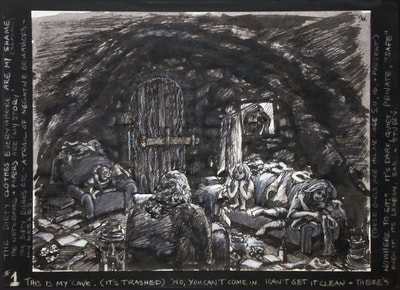
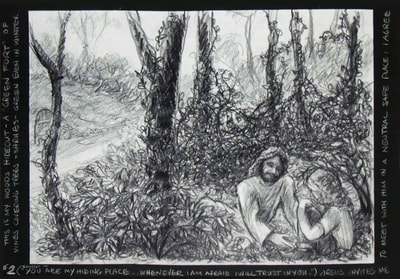
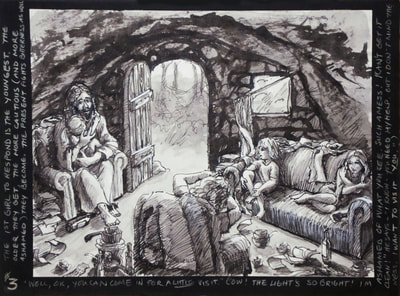
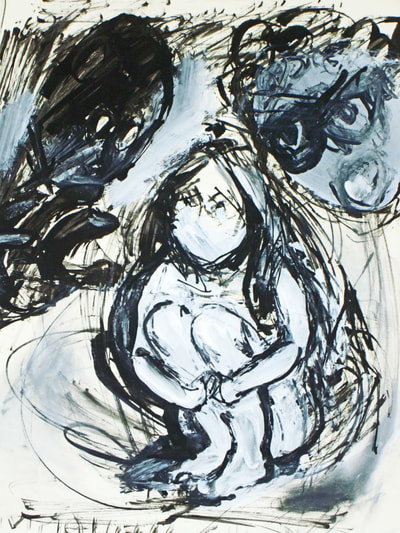
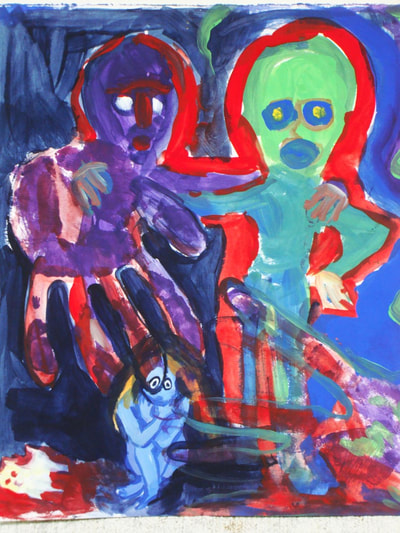
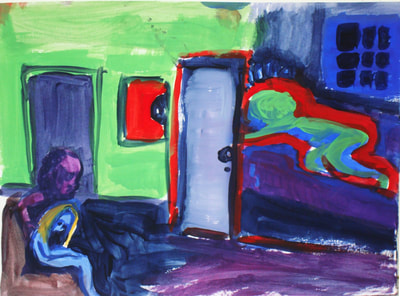
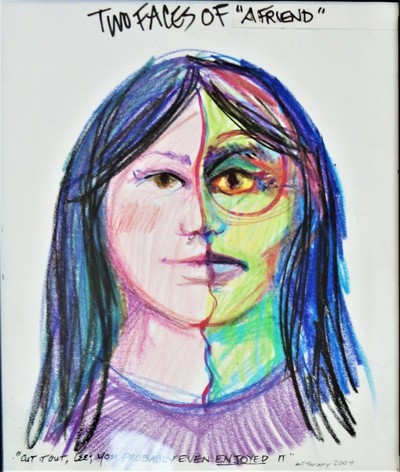
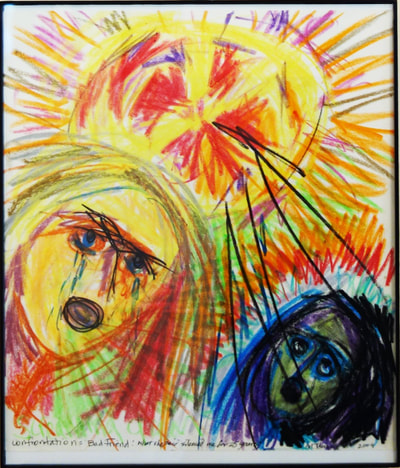
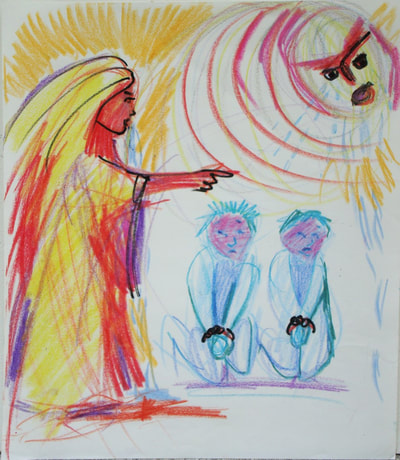
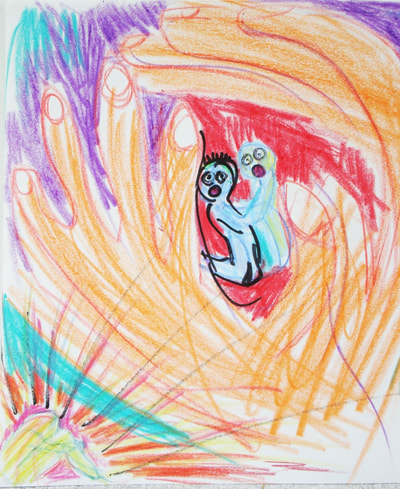
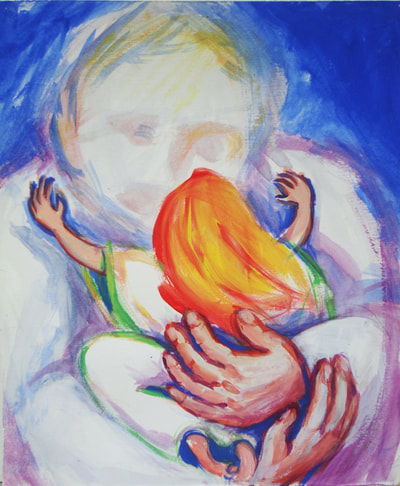
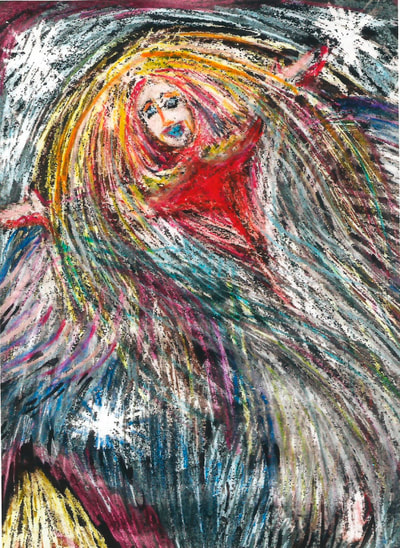
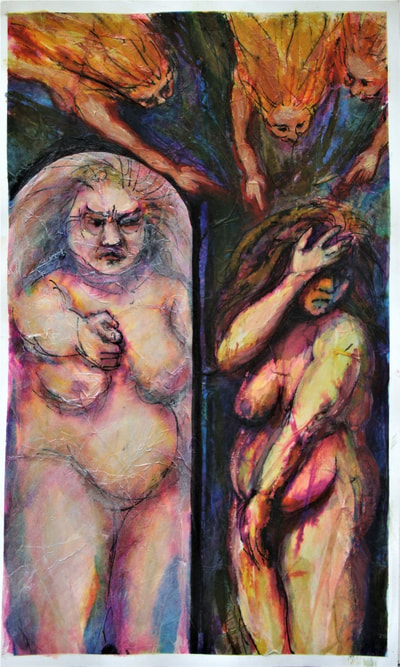
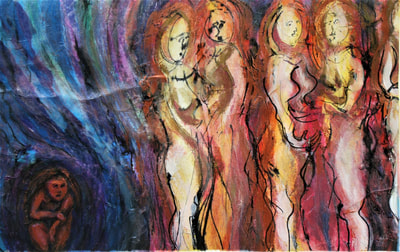

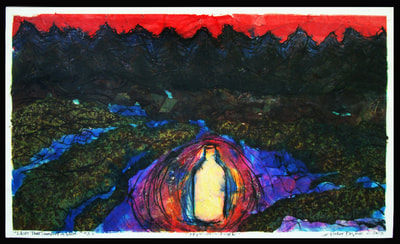
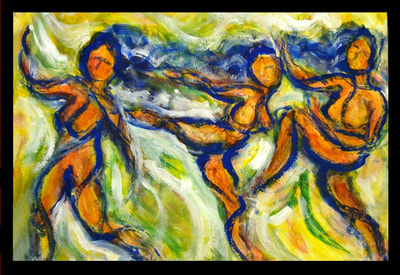
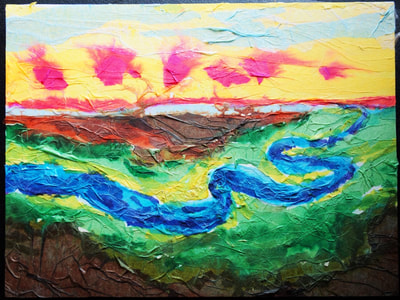
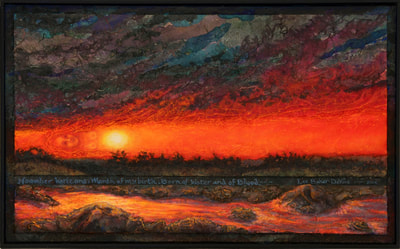

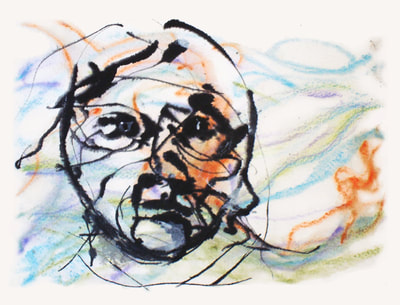
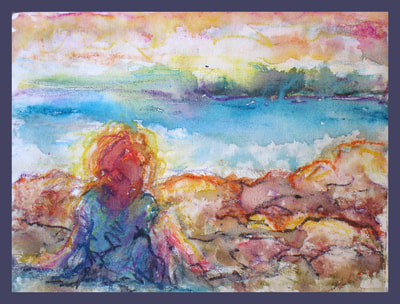
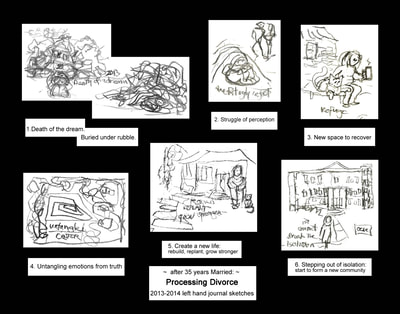
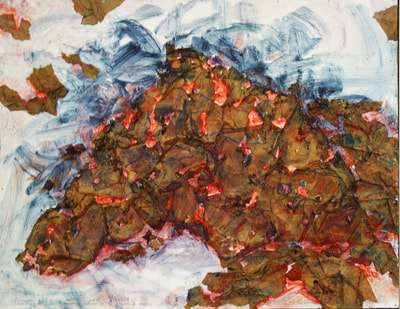
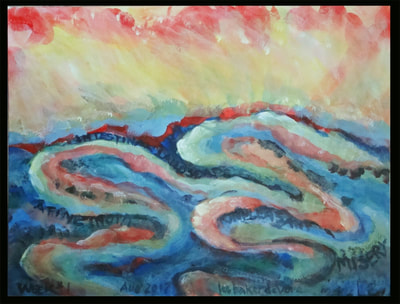
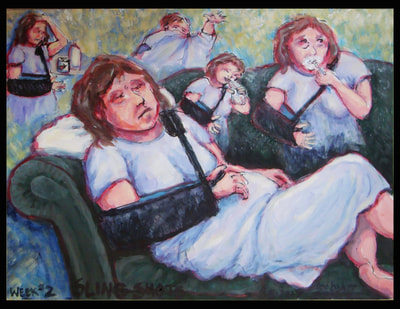

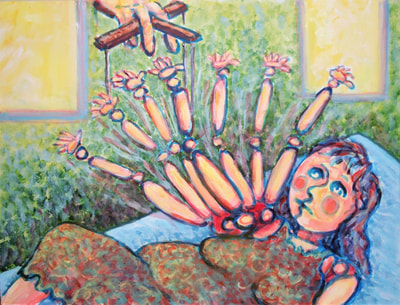
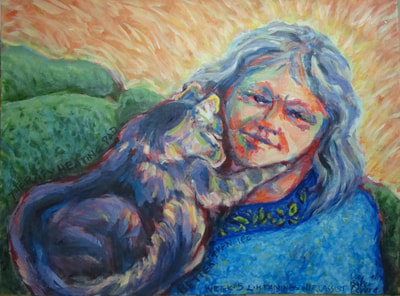

 RSS Feed
RSS Feed